– Welcome, everyone, to Wednesday Nite at the Lab. I’m Tom Zinnen, I work here at the UW-Madison Biotechnology Center. I also work for Cooperative Extension. And on behalf of those folks and our other core organizers, Wisconsin Public Television, Wisconsin Alumni Association, and the UW-Madison Science Alliance, thanks again for coming to Wednesday Nite at the Lab. We do this every Wednesday night, 50 times a year. Tonight it’s my pleasure to introduce to you Dan Young of the Department of Entomology. He’ll be here to talk about the insect research collection here at the UW, the Department of Entomology. It’s a pretty amazing thing to be able to collect, whether it’s plants or minerals or insects in this case. And I think one of the cool things in talking to Dan was their collection dates back almost 170 years and almost 3 million specimens. And that’s a lot of bugs. But it’s also a lot of heritage, and it grows year by year by year. I’m looking forward to hearing what Dan has to say about the Wisconsin Insect Research Collection here at the University of Wisconsin. Please join me in welcoming Dan Young back to Wednesday Nite at the Lab. (applause)
– Thanks, Tom, and thanks you all for coming. Undoubtedly, this is going to be an insanely stimulating presentation, and you’re going to have a million questions. I hope you brought paper to write them down, because they’ve told me I’m not supposed to be entertaining questions until the end. Hopefully, you’ll have questions, but if you can, save them till the end. So in Tom’s prelude, he actually mentioned a couple of, or tiptoed around, a couple of other collections that are on campus. And so before I get started with our collection, who can tell me the other natural history collections that are here on campus? We have some amazing, amazing natural history collections. So there’s entomology, primary, first and foremost. What? Botany? The State Herbarium, right? The Wisconsin State Herbarium, that’s like saying Ohio State. You have to put “the” in front of it. So the State of Wisconsin Herbarium, right?
– [Audience Member] Geology.
– Geology. What? Zoology. You’ve got four of them. In one of the talks coming up, you mentioned something about in September or October?
– [Audience Member] Anthropology.
– Anthropology, those are our five natural history collections on campus. And those form a consortium. The UW Natural History Museum’s council, for which I serve as co-chair, and some of you are familiar, perhaps, with the UW2020 project, and our consortium did receive one of those grants a year or so ago to try to develop a portal, a digital portal, to better integrate our collections so that you could ask the– You could put in a query and find out what particular species of beetle might be found on which particular species of plant at what particular part of the state with the phenology of flowering at what particular time of the year, so all those data exist disparately in all these collections, and this is an attempt to try to bring those together. These kinds of things are going on nationally and internationally, as well. But we were very fortunate to be able to bring our collections here on campus together, at least remotely, to do that, as well. But largely what I’m here to talk to you tonight is about our UW Insect Research Collection. So here we are at the door. Welcome. And we’re going to open the door and let you in. This is about the best way we can do it right now, because if you read what Tom head sent out to you, our building is under– Well, they call it construction, but it’s mostly been destruction. So hopefully, at some point, some of you might be able to manage to get ahold of us and get a tour. We are largely a research collection. We are not so much a museum. So if you were to go to the geology museum, they’re a museum. And they have a lot of space that’s devoted to displays. That is one of the ways that I differentiate between a museum and a collection. A museum would tend to have a lot of public display areas, like the Milwaukee Public Museum, a favorite of ours. We are largely a research collection, so once you enter into the bowels of the collection, it’s not going to look real exciting unless you get real excited about steel and metal cabinets. But when you come into our main range here on the third floor of Russell Labs, you’re going to go about halfway there, and then the next shot is going to be panning down to the right, where we see those beautiful, wonderful steel cabinets, each of which contains thousands upon thousands upon thousands of specimens that are all arranged hierarchically so that we can get at them very quickly.
So I’m going to go through six major topical areas with you that relate to our collection. And we’re going to start with history. As Tom mentioned, a collection our age does have a pretty good amount of history associated with it. So the collection, 170 might be a little bit, a little bit on the hefty side, but we know that although records weren’t kept as well as we might’ve archived, but we know that from around 1900, certainly around 1909, there were beginnings of a collection that were starting to assemble themselves. This became a little bit more formalized in the early 1950s down in good old King Hall. At the time the collection became something that you would recognize as a single standing collection, the collection was sort of housed and kept by whoever was teaching the insect identification course at that time. That was one of the responsibilities that they had, to upkeep that collection, which was pretty doable, because it was relatively small then. So early on, growth was about a half a dozen cabinets, and if you remember looking down that long aisle, each of those long aisles is divided into smaller aisles, so we have several hundred cabinets now. And we have also two facilities. I’ll get into that in a little bit. So early growth, about a half a dozen cabinets, and each cabinet would hold 24 drawers, our standard insect drawers, and these came largely from donations by faculty, by their research projects, some students that would donate as a part of what they were doing with their own collections. Again, if you read Tom’s little preamble tonight, he talked about a collection that he made down in Platteville, wasn’t it? Yeah. And donations from amateurs. We do get a lot of really substantive donations from amateurs, just like people that are bird enthusiasts or whatever enthusiasts, they tend to know a lot about the subject, and when they decide they no longer are able to keep their collection, of if they happen to die, and there’s a relative that’s thoughtful enough to remember that these are incredibly valuable things, they may contact us or other collections around, and we try to do a rescue of those kinds of collections. So as would not be uncommon, early efforts from our collection emphasize Coleoptera, those are the beetles. How many of you who work on beetles? Hi, Jackie. (laughter) So more than one out of four of every kind of living species on the planet is a beetle. So what worthless things are you working on? (laughter) Yeah, so beetles, it’s understandable that would be a major emphasis, because there so many of them. Diptera, the flies. Flies, of course, have a lot of nuisance value with mosquitoes and black flies and no-see-ums and deer flies, but flies have some of the most crazy, bizarre, incredibly interesting biologies of anything on the planet, so there’s a lot of interesting flies, and we’ll get back to that. It’s one of our main sub-stories, our sub-plots.
And, of course, the god-awful Lepidoptera. So, let’s see, this would be like, so it would be like the Packers and the Vikings thing, kind of, right? So if you work on beetles, then Lepidoptera, which are the butterflies and moths are just absolutely disgusting. But they are, like Coleoptera and Diptera, three of the largest orders of insects. So definitely there’d be a lot of people that would be working on those, hobbyists and whatnot. Some of the folks that I’ve followed in the footsteps, Charles Fluke. It says in the archives that he was director of the WIRC, the Wisconsin Insect Research Collection from 1916 to 1958. I’m thinking maybe that’s when he lived. That’s a lot of years. I’d have to work like 20 more years to catch up to that. Maybe, maybe. Fluke was a fly specialist. And again, he will come back to us as one of our sub-plots, because the group that he specialized on turns out to be a family of flies for which our collection is one of the best in the entire world. Roy Shenefelt, from 1958 to 1977, a little bit before I got here. Roy was more of a bibliographer than really a taxonomist. Nominally, he worked on wasps, but a lot of what he liked to do was just collect reprints and organize bibliographic kinds of materials, write catalogs of species and things like. Jane Harrington was there from ’77 to ’91. I did overlap with Jane. She was a Hemepterist, so the true bugs. She worked on Lygaeoids, so, let’s see, like in a couple of weeks when, well, a few weeks, maybe, when the milkweed pods begin to dehisce. In fact, I’ve already seen some already. You’ll see a black and orange bug that really is a bug. That is its scientific name. The order Hemeptera are the bugs, the true bugs. So you’ll begin to see Lygaeus on milkweed, a couple of different groups of them. And she didn’t work on that particular one, but she actually worked on some weird ones that were blood-feeders in the tropics. And then this dude showed up and has been a director since 1991. My position’s a wee bit odd, not only for the department, but or the college and maybe even for the university. My appointment is largely teaching. My appointment, as you spread it out, is 75% teaching, 20% research, and they’ve allowed me to use a nominal 5% to serve as the director of the collection, and I listed a couple of groups there that I do most of my research with.
Ironically, we’ve managed to have the same number of curators. So the director in our particular situation oversees the general planning and brainstorming of where the collection is and where it’s headed, tries desperately, usually unsuccessfully, to find money to keep things going, and works very closely with the curator. The curator is the person that you’d be likely to find there on a day-to-day basis making all those plans happen. So Lutz Bayer was there from ’68 to ’73, John Baker, ’73 to ’78, both fairly short-tenured, Steve Krauth the opposite, 1978 to 2013, now an emeritus curator and still lives up in my lab, comes in pretty much every day. And then our current curator is Dr. Craig Brabant, who was actually a student of mine. He was interim right when Steve retired. Literally the day the position vacancy announcement was set forth was the same exact day that the university put a hiring freeze on. So Craig was sort of interim for two years, and we were able to get that position back with a lot of clawing and struggling. So since 2015 he’s been full-time curator. He works on wasps. The group that he works on is the family Mutillidae, which are the velvet ants. Craig and his significant other just got back from a conference, an international conference in Japan Sunday, Saturday, Sunday, Monday. Some of the associates, and I’m not going to be able to mention nearly all of them, but some of our primary ones, Byron Buckley is actually a retired veterinarian that lives out in Deerfield. He does a lot of preparation, is also an amateur Coleopterist, so he’s helped me a lot with moving some of my material that I’ve collected into a stage where it can actually be identified, mounted, labeled, and identified.
Jeff Gruber, so Jeff Gruber started out as a master’s student with me working on a group of beetles, and just couldn’t quite get to the point where he wanted to actually get serious enough to do the research and do the publishing. But he’s an insane collector. He’s the guy that you either would definitely want to go fishing with, or you would never want to be in the same boat with, ’cause if you show it to him and say, I want some of these, he will find them no matter what it is, if it’s a beetle, a fly, a wasp, or anything. He’s got the only one of umpteen things that are in our collection. Jeff has also done a lot more these days with photography, which he’s taken up, which is a lot easier to manage than collecting and killing and pinning and mounting and labeling, I guess. Kyle Johnson, another former student of mine, just got back from Canada and Alaska and works on largely alpine and also bog-related butterflies. Current student Ann Marsh works on a group of beetles, a sub-family of, Staphylinoidea. So Coleoptera, the largest family, I mean the largest order of anything on the planet. The largest family within that order is the Staphylinoidea. These are the rove beetles. And when Ann said she wanted to work on rove beetles, I said, no way. There’s like 65,000 species of these things. You’re not going to work on those for a master’s. But we did find one sub-family, and the Tachyporines, which actually there’s a pretty good literature on, because a Canadian worked on them quite a bit. So she’s working on a faunistic survey of the state to give us a better idea, a better baseline of what’s here in Wisconsin. Another former student is an undergrad, Robert Otto, didn’t do any graduate work here, but he’s probably published more than any of my grad students, probably all of them combined. He works on a relatively modest-sized family of beetles that look a lot like click beetles, but aren’t. Keri Steiger, another one of my former students, worked on a group of longhorn beetles. Jackie Wisnat, that’s one, two, three, four, five, six, or seven rows back there, my newest student, and she will be getting really, really, really serious with a proposal, and she’s going to be working, like Ann, a faunistic survey of the family Tetratomidae, relatively small family of beetles, again, with a pretty good literature base. These are fungus feeders, and Jackie’s fresh off from a good fungus course that we had here last semester, so she’ll be able to make a nice marriage between her knowledge of fungi and the beetles. And then lastly, Andrew Williams, on my list. Andrew is an honorary fellow. He’s sort of a prairie insect enthusiast. Housing, so we moved into Russell Labs in 1963, so I guess it was destined to have some remodeling done. Our space on the third floor occupies 1,141 square feet. Now, I put in here that approximately 830 square feet has been allocated to the actual cabinetry footprint. That’s actually probably a little bit larger now. I didn’t go back and remeasure it. But Craig, Dr. Brabant’s been very, very good at squishing space, which is something we very much always need around here.
Who decided that building a capitol on an isthmus was a great idea, and then putting a massive university there? Anyway. So we have always been struggling for space to accommodate our growth, because we are not a static collection at all. We grow very, very consistently throughout the years, especially since I’ve been director, because we have a lot of students, we have a lot of work going on, and we’re not just a dust ball sort of a collection. So in addition to our space that we have here, we’ve got a small storage space in the basement, which is largely where we keep collecting gear and things like that, a very small storage space out at the West Madison Farms in one of the outbuildings. On the first floor right now between the two teaching labs that we have, there’s a little lab where we have one of our imaging systems that we use for taking good pictures. But we’ve updated that, and we now have another imaging system up in the main collection, as well, which we’ll peek at here briefly. So yeah, we have dedicated space by the department and college as a collecting facility. We have a space, and again, I’ll show you some pictures of these things, where we could house a few researchers. Sometimes these are undergraduates or graduate students that are volunteering, sometimes they’re visiting scientists that spend some time with us. And we also have an office for the curator, a small library of some of our resources. Steenbock, of course, is right next door, so that’s handy, and every third thing these days is digitized, so that makes it pretty handy too, and then that imaging facility that I’ll show you.
So our major holdings now are a whole bunch of names that won’t mean anything to you, but suffice to say, we have a lot of additional areas that we have expanded to accommodate now, as well. I’m one floor up, my office and my suite of offices and labs space where my grad students are is one floor up in the fourth floor. So in addition to our space that we have in Russell, as I said, over the years, we did all that we could. I think most of my floor burns from my knees are gone from begging the college for more space, but there was, in the stock pavilion, which is still a stock pavilion, there is a third floor that had become, basically, a warehouse for things that people didn’t want anymore. Yeah, there’s that place in Hogwarts kind of like that, right? So we were able– Well, one of the deans walked me over and said, you know, do you have a vision? (laughter) Well, I’m not that tall, so seeing over all this stuff was the first problem, but that is the space. We were able to get a couple of different pools of money, and the college and some of the other departments around were very helpful to us, and physical plant was helpful, as well. Basically, we were able to clean out that space, remodel the third floor of the stock pavilion, and this is what you see right now It functionally opened in 2010. Compared to the other side, to the Russell Lab facility, this looks a whole lot more jumbled up, because it is. It’s a vastly larger space. It quadruples our potential footprint. But it also houses, pretty much all the cabinetry and boxes that you see there are all those disgusting Lepidoptera, which is the last major group of insects that we have to reorganize, to re-catalog, to reclassify, and so that’s our major task that basically is underway right now.
There’s also back this way a room that we will dedicate to a reference room that’ll have a little bit more sizable library and reprints and things of that nature, a place for people to study. And again, what we did was we divided that room so that the massive order of insects that’s over in the annex, which we typically refer to that space in the stock pavilion, houses the Lepidoptera, you know, butterflies and moths. There are micros that you can hardly see. But a lot of butterflies and moths are grossly large, for insects, small for mammals, but large for insects, and they take up a lot of room. So in order to build that collection, we have to have a lot of space available. We had the potential of acquiring one of the best collections of hummingbird moths in the state, and we had to turn it down, because we didn’t have room for it. That was some years ago, and it went to the Milwaukee Public Museum. But we’re now in a much better shape to take on new collections, but at any rate, the real, real large order of insects that’s over in the annex is the Lepidoptera, butterflies and moths. But also, we acquired, when he retired, the Hilsenhoff aquatic insect collection. This is a massive collection of aquatic insects, almost entirely from Wisconsin. Bill Hilsenhoff spent his whole career here, his undergraduate, his graduate, his faculty time all was at the UW-Madison. When he retired, I took over his space, so 445 were his digs eons ago. And literally, if it rained hard and there was a mud puddle, he probably collected there. If it was aquatic, he probably collected there. Anywhere in the state there’s probably been stuff that Hilsenhoff collected. So those are largely research spaces. In addition to that, it’s under our purview to also maintain and manage our instructional collections, our teaching collections. So our teaching laboratories are rooms 147 and 153 in Russell Labs, and this is a shot just looking at the entryway to 153, where a few of our cabinets are that house our teaching collections that support our introductory entomology, our taxonomy courses, our medical entomology course, economic entomology, courses where we’re going to use specimens with students to help teach. So that’s about equivalent of 15 24-drawer cabinets. Some of our outreach materials are also, when we go out to schools and whatnot. So taxonomic scope and strengths, as was noted, we have probably over 3 million specimens now.
I challenge any of you to dispute the number. (laughter) But we have probably almost double that, probably over, in excess of 5 million specimens that are what we call bulk specimens. So when we go out and collect, typically, I mean, you probably can think of, you know, the crazy dude with Coke bottle glasses on, and the white lab coat, stumbling through the meadows with a net. That would be Kyle. He would kind of do that probably. But most of us don’t collect that way. Most of us use fairly large trapping systems that actively or passively trap insects that are coming through. So when we do that, you accumulate massive amounts of material, and so a jar, a single jar from a single week’s collection may have thousands of specimens, and they’re way too good to throw away, even though you’re probably only looking, really, for one or two things in that jar. So everything else gets bulked into ethyl alcohol, where it waits for the next person to be interested in it or to do some more sorting of it and things like that. So that is a massive backlog that we will always have. So as I said, our historical and current strengths, Coleoptera and Lepidoptera, I mentioned also the wasps, the bees and wasps of the Hymenoptera. Wasps get a lot of attention in relatively recent days, because a lot of them are parasitoids of economically significant insects, so they’re the good guys, and so people need to know what in the world they are in order to study their biology, so understanding the taxonomy of them is incredibly important, so that you put this parasitoid together with this particular group of problems and can figure out what’s going on. Also, even more recently, the pollinators, the bees and some of the wasps are incredibly important, significant, and much maligned by the way we’ve been treating the planet. So interest has really, really swelled with what do we have out there in the way of native pollinators and also those vagabond pollinators like the honey bee, which, of course, is not native to the US at all. Diptera, by virtue of the fact they’re just so cool, if I didn’t work on beetles, I’d probably work on flies, but also the medical significance is massive.
And we have a brand new, highly-funded center for study of, particularly blood-feeding Diptera, mosquitoes and so on, and ticks as well, which aren’t insects, but– So all of that… Yeah, all of that and again, 21,000 specimens per year in recent years, that’s a dorky average. I mean, look at the jars, take a cubic inch, and extrapolate it, and it’s a silly number, it’s not a real number, but it’s mainly meant to tell you that it’s a very active collection, that there certainly are a number of collections out there that are basically mothballed. They’re cared for, but they don’t grow. They’re relatively stagnant. Ours is definitely not that. So some of our noteworthy holdings, as I mentioned, our first director, Charles Fluke, he was a specialist on that group of flies, the syrphid flies, hover flies, or flower flies, because you usually find them in flowers. No, that’s not a wasp, that’s a fly. They tend to very commonly mimic wasps. And if you really get to the point you know the difference, you can show off. You can go out there and grab with your hand, and if you’re with somebody, they’ll be freaking out that you’re trying to collect a wasp with your hand. Make sure you get pretty good at it. (laughter) It’s a little embarrassing when you suddenly get stung, but– This one particular family of flies, we have over 16,000 specimens in our collection, and as I said, it’s probably just about the best in North America, probably even better than the Smithsonian, and one of the best in the world. In fact, one of the syrphid specialists who retired from the Smithsonian commonly would be asking us for stuff.
The Marshall Collection, I haven’t been able to find out just a whole lot about Marshall. He was a faculty member in the zoology department, and a lot of the nucleus of our collection came from him, and also from his bandying back and forth with other folks. A lot of collectors will trade material with other people. I got some cool stuff from Wisconsin, you got some cool stuff from Missouri, why don’t we switch stuff, and we’ll get more species and so on. So the nucleus of our collection is probably largely from Marshall. There aren’t too many insect drawers in our collection that you can open up without finding Marshall’s name popping up here and there. Gene DeFoliart was a medical entomologist and on-and-off chair of the department a couple of different times. He worked largely on mosquitoes, so Culicidae, mosquitoes. We’ve got a fairly substantial collection of wet and dry alcohol-preserved slide-mounted Chloropidae, you know those little gnats that just like to hang around your eyes, sort of eye-gnat things? Those are chloropids, and there actually are a few in the tropics that will transmit some pathogens. None of ours do, but they still bother you. And he also, and I didn’t really know this until a little bit more recently, but he started out like a lot of entomologists, as a stupid Lepidopterist. And he actually did a lot of his work as a student in Wyoming and actually published a paper on the butterflies of Wyoming. And when he died, his daughter contacted us and said, you know, my dad had all these cabinets. I said, yeah, I remember seeing them at the house. You couldn’t miss them. You even like almost stumbled over them. He was very proud of them. And I thought they all had mosquitoes in them, but they were large, and they had a massive number of these specimens that are historically very significant because of the age and the fact that a lot of these places are now corn.
So we acquired that collection of more than 5,000 specimens of butterflies. Bob Dick was also, he was largely, I guess, it’s hard to pin some of these folks down, but he was largely a morphologist. He put together a ginormous manuscript on morphology of insects, never published it. But he also did a lot of work on mosquitoes. So we have approximately 14,000 mounted and 6,000 slides of mosquitoes from him. There was a worker named Dennis that actually was at Whitewater. He was a faculty member at Whitewater, and he collected tree hoppers. The little guys you see, image there, are tree hoppers. They’re in the order Hemeptera. And we have a large number, roughly 10,000 specimens that came to us from Whitewater. I mentioned the Hilsenhoff collection, almost 200,000 specimens, aquatic insects, and again, mostly Wisconsin material. Walt Suter was faculty member at Kenosha College, and we ended up getting a fair amount of his stuff, some went elsewhere, but we have about 24 drawers of material that Suter collected. Towards the end of his lifetime, he did a lot of survey work up in Waushara County, and we got an extensive amount of material from him. Another one of these enthusiasts, just sort of came out of the blue, Gary Lachmund, he was in New York, and he contacted us and said, you know, I have some heartstrings in Wisconsin, grew up in southeastern Wisconsin, so his collection of almost 700 specimens of one genus of moths came to us, and that is historically significant, because most of those localities don’t exist anymore. And what few do, probably won’t before long. There are two workers that are revising, that are taxonomically revising this group, this genus of moths, and they have spent weeks and weeks and weeks here on and off, studying his material and are anxious to get back again, once we get our imaging system back up and running again, but again, one of these extremely valuable collections.
I have on and off throughout the years, just a few thousand at a time each year, donated my beetle collection, which is more than 200,000 specimens, just sort of shove a little bit more towards the collection each year, and ultimately will be giving most of it to the collection. The groups that I primarily do my research on, I’m not sure what I’m going to do with those. Some may come here, but the two centers for taxonomic research in the group that I work on primarily are in London and Paris. Paris’s collection is a mess, even though it’s probably one of the largest ones in the world. So I’m probably going to donate a lot of that stuff to the Natural History Museum in London, which is not the British Museum. Rosetta Stone, not bugs. (Laughter) Natural History Museum, bugs. Down the road from Harrods, Cromwell Road, bugs. (Laughter) I don’t remember the year. Wasn’t that long ago, out of the blue, again, St. Joseph College, which is in Rensselaer, Indiana, decided that, A, they didn’t want to keep their collection anymore, and then shortly after that, they decided they weren’t going to be a university anymore, so we were able to grab up the St. Joseph College of Lepidoptera, which is about 40 drawers of Lepidoptera, largely from Indiana, but also some worldwide stuff, as well. So scope… bearing in mind the good old tri-part admission of a land grant university, we serve primarily, I mean, we are largely to serve you, the people of Wisconsin. So our strength is largely Wisconsin. There’s no other place that has more Wisconsin insects than our collection. There’s really no other definitive research collection with a primary focus of research in the entire state. The only one that would come close would be the Milwaukee Public Museum, and even that is only largely due to the fact that the most recent hire is very much interested in promoting the profile of the research program, stuff that you would never see if you go to the Milwaukee Public Museum, because it’s all behind the scenes, but a very important collection, as well.
But in addition, our secondary area of strength would be the Great Lakes region. I did a lot of my work in Michigan, and all of that stuff is coming here through dribs and drabs. We have a large number of folks that are working in Minnesota, in Manitoba, in Illinois, so we get a lot of that. So the Great Lakes is certainly a strength of ours, and particularly the Western Great Lakes. And then a tertiary strength would be worldwide. We do have material from all over the world. In fact, when my curator just came back from his little meeting in Japan, he brought me three specimens of the group that I work on. I was very happy about that. So digitization, this is the drop-word these days in what we do in all of natural history, not only insects, but pretty much everything. I’m going to be heading to New Zealand in 10 days, and every other paper’s going to be about digitization. It gets to be incredibly technical and kind of boring, because I like to look at bugs and real things. But it is where a lot of the bang for the buck is these days. This is that 2020 grant that I mentioned. So in the lower image, you will see a shot of our digitizing room, our imaging room. So we have robotic system, which is shown here. This came to us as part of a grant that we had that ran out a couple of years ago. But this was meant, the idea, which didn’t turn out all that grand, but the idea was to be able to image entire drawers of insects at one time. So that drawer that you see with all those insects was imaged at one time. The whole thing was done at one time. And then you can pan up on that and get pretty good images of each of those individual specimens. Trying to take individual images of more than 3 million specimens with 21,000 coming in new each year is simply impossible. You will never even come close to catching up or keeping up. So this was an idea that we had with a number of other collections around the country that said, let’s try this. Let’s work with some computer engineers. These were folks down at the Illinois Natural History survey. And they came up with after four or five designs this robot system for imaging drawers. And Jackie’s one of our resident specialists in imaging. We also have a system back here, if you can see where I’m pointing, that’s a really, really nice SLR camera on a rail system so you can take sort of external CAT scans of insects, and then compile all of those images together to get extremely high resolution compacted pictures of insects, which is pretty cool, too. So our digitization efforts are twofold. One would be, what does that specimen look like in some detail, but secondly the data, the data that are associated with that. I say and I tell my students this in Introductory Entomology, a specimen, whether it’s an insect or a herbarium specimen or a mineral or an artifact from an Indian mound, those specimens have value to science from two rather disparate, but yet totally united points of view. One is the specimen itself. What’s its anatomy? What’s its morphology? What are those things hanging out? Secondly, however, are the data. The data are incredibly important. Without the data, all you have is a pretty specimen. It has artistic value, it may have some personal value, but scientifically, it has no value. There’s no value at all. Specimens come to us, they could be the coolest looking things in the world, from some crazy part of the world, but if they don’t have data, they’re worthless to us. We would put them in our outreach collection. We’d put them in our teaching collection. We’d say, go show those to some kids, and they’ll be thrilled, and then they’ll break them, and we’ll throw them away, because they have no value without the data, because it’s the data that we pull from those specimens that tell us what we know about the state of the world. How things are changing. How things have evolved. How things are similar. How things are different. How phenology is changing.
The date, the place, the time, the events, all of those things tell us, they paint a massive picture about what’s going on. So we digitize those pieces of information, as well. So some of these words you might know, others you certainly won’t. BIOTA was an early developed digitization software program. It was originally developed as part of a faunistic study, a long-term faunistic study in Costa Rica that was largely butterflies and then plants, and then it was made more widely available. We started out trying to do our efforts with that. It sort of fell off the face of the earth. Some of you are familiar with FileMaker. You can put together folders and make databases with FileMaker. Excel spreadsheets a lot of people use. More recently, we’ve sort of flipped the coin and said, “You know what we’re going to do is we’re going to go with this new thing.” Well, new as in 20 years old, called Specify. It was an NSF-supported product that came out of Kansas and has been updated, updated, updated all the time. So we and most of the other naturalistic collections on campus use that as a database, as a relational database to dump all of our information into. And then that information, so that crazy old label there from, what is it, 1931 it looks like, May 24th, 1931, at 4,700 feet in the Cameron Highlands of Malaysia. All of that information gets entered, and then it becomes relationally available to anybody around the world. And we would find, yeah, there’s similar specimens like that in Indonesia, Malaysia, and then in London, and wow, all of those came from the same series that was collected by frickin’ Pendlebury back in 1931. We didn’t even know that. So we can reassemble all of those disparate collections, and then we can get a better picture of what things were like in the good old Cameron Highlands before it became mostly tea… and palm oil. Okay. So, when we enter those data and get the relationally available, digitized, we then can export those to other places around the world, and there’s an exporting product called SCAN that we’re beginning to use, and again, as I mentioned, we are also a participant, along with most of the other collections on campus, except for anthropology, in this 2020 initiative. So some of the things that we’ve been involved with and are involved with. We were co-PI on an NSF-TCN. They love acronyms. So that’s a thematic collection network. Should be TCN, not TNC. TCN, Thematic Collection Network. So what that means is you have a theme, let’s try to robotically digitize our collections by doing whole drawer images, that’s the theme, and you get a bunch of collections together, all over the country, all over the world, that say yeah, we want to do that. And you write a proposal, and then it doesn’t get accepted, and then you rewrite it, and then it doesn’t get accepted, and then you rewrite it a third time, and then maybe it gets accepted, and then they give you some money, and then you can’t do what you want to do, but anyway, that was InvertNet, invertebrate network. That’s where that robot system came from. As I mentioned, we are a current participant in SCAN, which stands for Symbiota Collections of Arthropods Network. That’s out of, is that out of Arizona? Do you remember? New Mexico? Southwest of here, down southwest of here, just east of everything that’s on fire, probably. And then we’re also right in the midst right now of partnering with the Milwaukee Public Museum and a whole bunch of other collections and submitting a brand new NSL proposal, again, part of that TCN, that Thematic Collection Network, which is going to be referred to as the TPT, the Terrestrial Parasite Tracker. This in keeping with the fact that there’s been, none of these thematic collections networks has meant to try to bridge together the information from a lot of disparate collections that might’ve been collecting things that were associated with disease transmission, so vectors. There are a lot of really small specialized collections that never really ever show up in a collection like ours. You didn’t even know they’re there, and then some little parasitology lab somewhere and somebody has this really great collection, but it never really makes it into a regular collection, but the data are incredible. And to have access to that and get it all digitized, get it all relationally available so we can track, so that we can track what’s happening to the species that are the vectors of the pathogens that are making us sick.
So that is a proposal that we’re actually in the midst of writing currently. Lastly, outreach and educational activities… This is not currently up to date, although I imagine it’s pretty much the same. The three-year average, probably three years ago last time I did this was about 1,800 individuals a year that touch up against us in some form or other. We do directly or indirectly a number of outreach programs to K-12, to school systems. We do have site visits each year. Sometimes we have these things called Bug Workshops. We historically had– Historically there was money available through some Eisenhower grants and other things that are available to teachers that would come here for a week or two onto campus, and they would be supported to do that, and we had workshops for them. We’ve become active in 4-H. There’s a 4-H Leader Youth Conference here every year, and we’ve been participating in that to help train and support, not only the youth, but the senior leaders of the projects and some of the adult leaders as well. Several times when entomology has been a thematic part of the Science Olympiad, we’ve sort of worked with the students that were going to participate in that. How many of you know of Grandparents University? Hi, grandparents. Well, Grandparents University’s huge. It’s huge all over the place, and it’s very popular here on campus. Ran its course, what, a week or two ago? There were some very youngish-looking students and some rather seniorish-looking students running around, kind of together, at about mid-day on a hot day I’d see them all over at Babcock grabbing ice cream. That was Grandparents University. And we participate in that, as well. Jackie, myself, faculty, grad students, we very commonly would be historically asked, could you come out and do something for our school? And love to, but we can’t get away often. What we’ve done, though, is we’ve developed this group called the Insect Ambassadors, which is a consortium of, and a very informal consortium of our graduate students and some of our advanced undergraduate students. And they have a portal that they use that you people can go out to and basically book them to come to their schools and do those programs or in some cases to actually have the school come to our campus, and we can put on a show there, not necessarily in the collection, because we can’t accommodate that many people, but we oftentimes will open up our teaching labs and have that facilitate what’s going on. There is a, there’s an active course on this campus through zoology, integrative biology now, zoology, called ZOL 405, which is a museum studies course, which talks a lot about natural history collections in general, techniques. What are the things you do in the herbarium? How do you get that plant out of that sheet? What do you do to clean that mammal skeleton? What do you do to deal with that mineral, that artifact, archeologically? They visit all of our collections on campus, so ZOL 405, Museum Studies, we’ve been actively involved with them every year for some years now. In addition to teaching Introductory Entomology and a bunch of other ones, I also teach an advanced taxonomy series, a 700-level series, which intimately involves students in the collection. In fact, this fall I’ll be teaching Advanced Taxonomy of Coleoptera, the beetles, and so that will call upon students to do some work in the collection. Hot off the heels this last spring of Advanced Taxonomy of Diptera, the flies, which we did this last spring. This is also the summer I do every other, so summer of even years, this is all through the summer, I taught a field course. We’re into our waning couple of days of that class. They’re hopefully out writing a paper for me. Studies in Field Entomology, and I guess, actually, the top image there is a bunch of students were sitting over the campfire getting ready to have our tasty little foil dinners. This is out in the Laramie Mountains in Wyoming. I take a group of students out to the Rockies of Wyoming and then the Black Hills of South Dakota for two weeks, and that involves them with journaling, field work, and ultimately developing some oral papers, presentations, PowerPoint presentations for the class. And then, like I said, what they’re doing right now is putting together a final written paper. But very frequently, when they get back, they will interact with the collection or some of us related to the collection to help figure out what it is that they were looking at and journaling about. And that is the end of the slide show, and that is time for us to close the door I guess. That is time for questions. (applause) Yay!
Search University Place Episodes
Related Stories from PBS Wisconsin's Blog

Donate to sign up. Activate and sign in to Passport. It's that easy to help PBS Wisconsin serve your community through media that educates, inspires, and entertains.
Make your membership gift today
Only for new users: Activate Passport using your code or email address
Already a member?
Look up my account
Need some help? Go to FAQ or visit PBS Passport Help
Need help accessing PBS Wisconsin anywhere?

Online Access | Platform & Device Access | Cable or Satellite Access | Over-The-Air Access
Visit Access Guide
Need help accessing PBS Wisconsin anywhere?

Visit Our
Live TV Access Guide
Online AccessPlatform & Device Access
Cable or Satellite Access
Over-The-Air Access
Visit Access Guide
 Passport
Passport






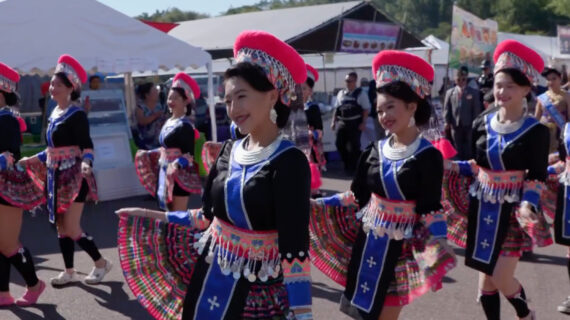
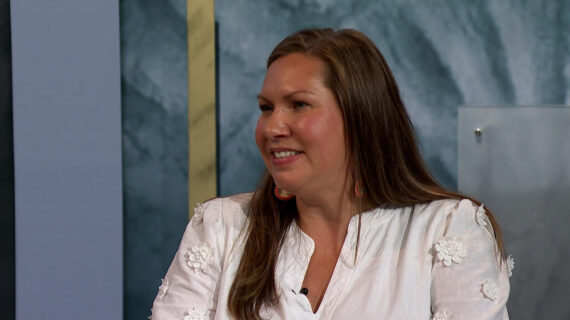
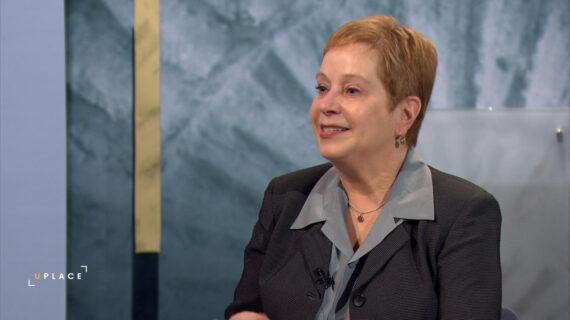

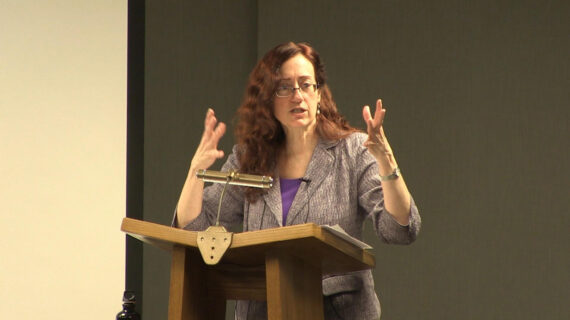
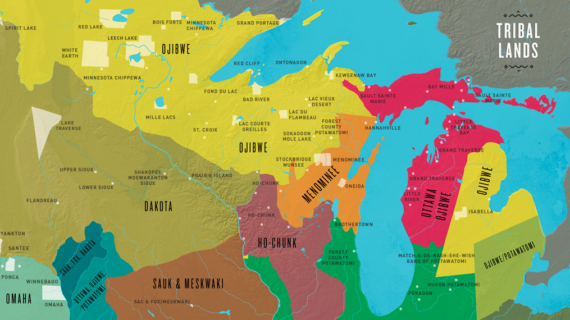
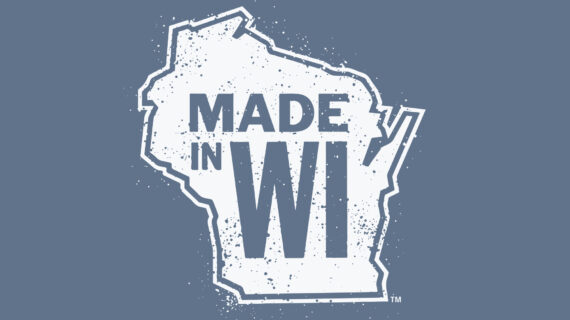
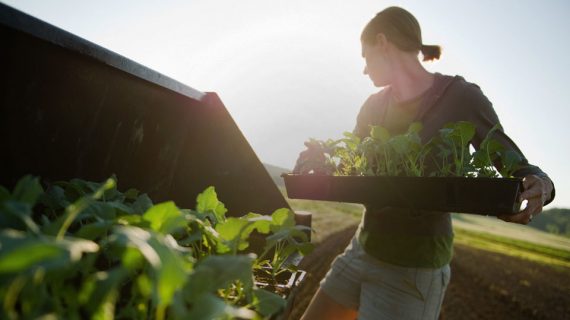
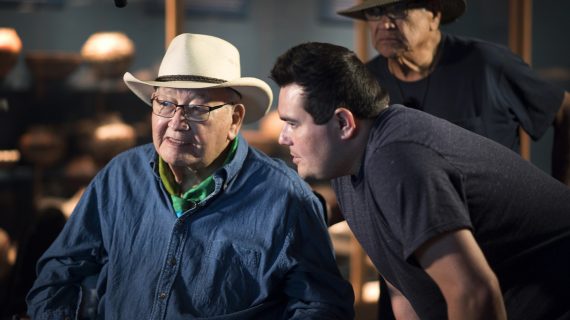



Follow Us